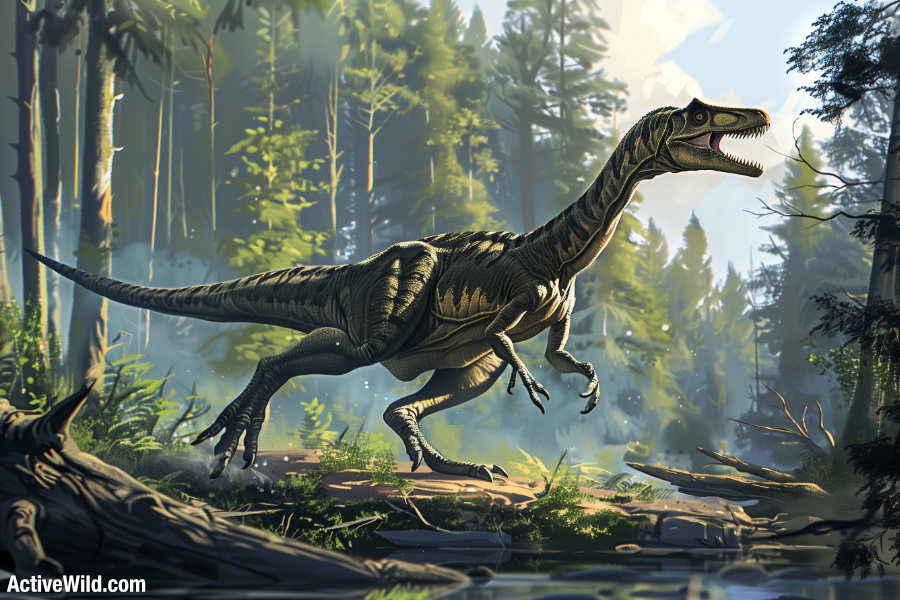Liliensternus was a bipedal predator of the Late Triassic Period. This relatively lightweight, agile theropod would have been an effective hunter during its time.
Read on to discover more about this early ancestor of large predators such as Allosaurus and T. rex.
Liliensternus Facts
- Type of Dinosaur: Theropod
- Diet: Carnivore
- Continent(s) Found: Europe (primarily in Germany)
- Length: Approximately 5.2 meters (17 feet)
- Weight: Approximately 127 kilograms (280 pounds)
- Period: Late Triassic (Liliensternus lived around 210 million years ago)
What Did Liliensternus Look Like?


Liliensternus was a medium-sized theropod with a slender and agile build. It walked on two strong hind legs, with a long, balancing tail.
The skull of Liliensternus was elongated with sharp, serrated teeth, indicating a carnivorous diet. It had relatively short arms ending in five-fingered hands, with three large and two small digits. (Later theropods would have only three digits on each hand.) The hands were equipped with sharp claws for grasping prey.
The overall body structure of Liliensternus suggests it was a fast and efficient hunter.
Liliensternus had a lightweight frame, contributing to its agility and speed, essential for chasing down prey in its Late Triassic environment.
What Type Of Dinosaur Was Liliensternus?


Liliensternus was a theropod dinosaur. Theropods are a group of bipedal saurischian dinosaurs that are primarily carnivorous.
This group includes well-known dinosaurs like Tyrannosaurus rex and Velociraptor (both of which lived millions of years later than Liliensternus), and they are characterized by their hollow bones and three-toed limbs.
Liliensternus, being a part of this group, shared these general characteristics, making it a predatory dinosaur of the Late Triassic period.
You can find out more about the different types of dinosaurs on this page: Types of Dinosaurs
Where Did Liliensternus Live?
Liliensternus lived in what is now Europe. Specimens have primarily been discovered in Germany’s Trossingen Formation in Baden-Württemberg.
This region has yielded several important Late Triassic dinosaur fossils, providing valuable insights into the diversity and ecology of dinosaurs from this period.
During the Late Triassic period, this area was part of the supercontinent Pangaea, which had a different climate and geography compared to today.
The environment in which Liliensternus lived would have been a semi-arid region with seasonal rains, supporting a variety of plant life and other animals, providing a suitable habitat for this agile predator.
When Did Liliensternus Live?
Liliensternus lived during the Late Triassic period, approximately 210 million years ago.
What Dinosaurs And Other Animals Did Liliensternus Live With?
During the Late Triassic period, Liliensternus coexisted with a variety of other dinosaurs and prehistoric animals.
Among its contemporaries were Plateosaurus, a large, bipedal herbivore with a long neck, and Procompsognathus, a small, agile carnivorous dinosaur.
The ecosystem also included non-dinosaurian creatures such as Phytosaurs, large semi-aquatic reptiles resembling modern crocodiles, and Aetosaurs, small-headed, armored reptiles primarily herbivorous or omnivorous in nature.
Amphibians like Metoposaurus thrived in freshwater environments, while early crocodylomorphs, small and agile relatives of modern crocodiles, were more terrestrial than their modern descendants.
These animals inhabited a dynamic ecosystem with river valleys, floodplains, and forests, where Liliensternus, as a medium-sized predator, would have played a crucial role in hunting smaller dinosaurs, reptiles, and other vertebrates.
Discover More About Dinosaur With Active Wild
You can see more Triassic dinosaurs on this page: Triassic Dinosaurs
You can see a list of Triassic Animals on this page: Triassic Animals (That Weren’t Dinosaurs)

